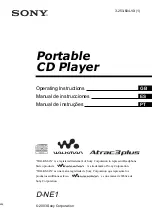
XML class 1009
XML class
Availability
Flash Player 5 (became a native object in Flash Player 6, which improved
performance significantly).
Description
Use the methods and properties of the XML class to load, parse, send, build, and manipulate
XML document trees.
You must use the constructor
new XML()
to create an XML object before calling any method of
the XML class.
An XML document is represented in Flash by the XML class. Each element of the hierarchical
document is represented by an XMLNode object.
Note:
The XML and XMLNode objects are modeled after the W3C DOM Level 1 recommendation:
www.w3.org/TR/1998/REC-DOM-Level-1-19981001/level-one-core.html
. That recommendation
specifies a Node interface and a Document interface. The Document interface inherits from the Node
interface, and adds methods such as
createElement()
and
createTextNode()
. In ActionScript, the
XML and XMLNode objects are designed to divide functionality along similar lines.
Method summary for the XML class
Method
Description
XML.addRequestHeader()
Adds or changes HTTP headers for
POST
operations.
XML.appendChild()
Appends a node to the end of the specified object’s child list.
XML.cloneNode()
Clones the specified node and, optionally, recursively clones all children.
XML.createElement()
Creates a new XML element.
XML.createTextNode()
Creates a new XML text node.
XML.getBytesLoaded()
Returns the number of bytes loaded for the specified XML document.
XML.getBytesTotal()
Returns the size of the XML document, in bytes.
XML.hasChildNodes()
Returns
true
if the specified node has child nodes; otherwise, returns
false
.
XML.insertBefore()
Inserts a node in front of an existing node in the specified node’s child list.
XML.load()
Loads a document (specified by the XML object) from a URL.
XML.parseXML()
Parses an XML document into the specified XML object tree.
XML.removeNode()
Removes the specified node from its parent.
XML.send()
Sends the specified XML object to a URL.
XML.sendAndLoad()
Sends the specified XML object to a URL, and loads the server response
into another XML object.
XML.toString()
Converts the specified node and any children to XML text.
CHAPTER 2
ActionScript Language Reference
Summary of Contents for FLASH MX
Page 1: ...ActionScript Language Reference ...
Page 20: ...20 Contents ...
Page 24: ...24 Chapter 1 Introduction ...
Page 145: ...Button onKeyDown 145 See also Button onKeyUp ...
Page 202: ...202 Chapter 2 ActionScript Language Reference See also break default strict equality switch ...
Page 282: ...282 Chapter 2 ActionScript Language Reference See also break continue while ...
Page 383: ...LoadVars addRequestHeader 383 See also XML addRequestHeader ...
Page 388: ...388 Chapter 2 my_lv load place a valid URL pointing to a text file here ...
Page 463: ...Microphone setRate 463 See also Microphone rate ...
Page 469: ...Microphone silenceLevel 469 See also Microphone gain Microphone setSilenceLevel ...
Page 480: ...480 Chapter 2 ActionScript Language Reference See also Mouse addListener ...
Page 529: ...MovieClip globalToLocal 529 See also MovieClip getBounds MovieClip localToGlobal ...
Page 612: ...612 Chapter 2 ActionScript Language Reference See also MovieClipLoader onLoadStart ...
Page 623: ...NetConnection class 623 See also NetStream class Video attachVideo ...
Page 649: ...Number 649 See also NaN Number class ...
Page 679: ...on 679 on release trace X this _x trace Y this _y stopDrag See also onClipEvent ...
Page 683: ...onUpdate 683 buttonLabel textColor my_mc labelColor ...
Page 788: ...788 Chapter 2 ActionScript Language Reference See also private public ...
Page 1001: ...Video height 1001 my_mc _height my_mc my_video height See also MovieClip _height Video width ...
Page 1022: ...1022 Chapter 2 ActionScript Language Reference See also XML createElement ...
Page 1057: ...XML xmlDecl 1057 See also XML docTypeDecl XML toString ...
Page 1070: ...1070 Chapter 2 ActionScript Language Reference ...
Page 1104: ...1104 Appendix Deprecated Language Elements ...
















































